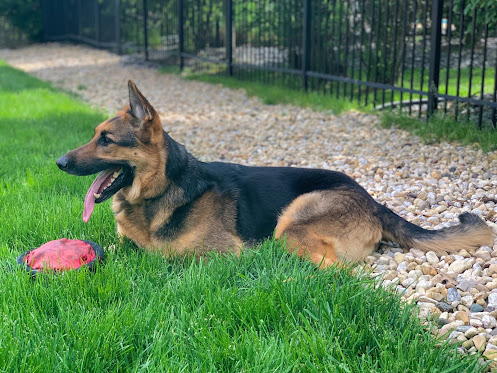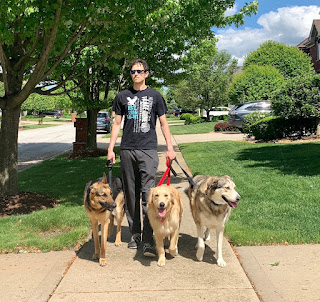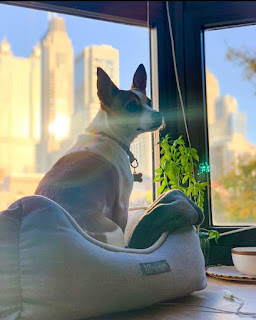Your Dog Needs an On/Off Switch - 7 Things You Can Do
Dogs need to work. Mentally and physically. They need to run, exercise and bite. They need to be able to ramp it up, but also, tone it down and relax. A lot of dogs are constantly in this amped up phase. They need to be able to turn it off.
Here is the problem: a lot of them can't. They need help. They are constantly go-go-go. Have you ever felt like you are constantly going, in that "fight or flight" mode? Anxious? Worried? Constantly thinking? It isn't a great feeling. This is how some dogs live every single day. Humans have strategies and stress-relief techniques. Dogs need YOU to give them what they need.
This is especially important considering they are expected to live in a house! Not a farm, not in the wild. In a house, where there are rules, fragile items, kids, and neighbors.
The great thing is as their owner, you can help them have the best of both worlds. Just like any other issue in dog training, we like to take a holistic approach and get to the bottom of the issue. The majority of the mental state of mind and behavior of your dog is due to how you raise it. Not obedience or 15-minute training sessions. Our 24/7 Approach teaches you how you can raise your dog properly.
Here are 7 things that are essential (especially for working breed dogs) in order to establish this on/off switch:
1. Be the leader your dog needs. There are so many benefits of this. Here is one example: when you are the leader, there is no reason for dogs to react to potential threats. They can sit back and enjoy the ride.
2. Teach your dog to EXIST in the world. When a dog exists, it doesn't react. New stimuli (dogs, people, cars, fireworks, etc.) are not a big deal. They are able to relax.
3. Make your dog value you, and pay attention to you. When your dog does those two things, it is not paying attention to other things. It focuses on you.
4. When not training, working, playing, you should always reinforce calm. Unless you are in a working session, your dog should not get anything unless it is calm. Food, affection, going through doors, etc.
5. Establish the proper routines, rules, and boundaries in the house. This is a HUGE part of the 24/7 Approach. One of the biggest things is to keep the house calm. Keep outside for play, or use something like a basement. This will create a clear boundary for the dog.
6. Structure your dog's day to include distinct times of high-level intense play and training, and calm moments in controlled positions such as in a crate, or down and place commands. The use of the crate is essential for dogs in their early stages of a good program. This creates needed separation, relaxation, and it makes you valuable.
7. Teach your dog impulse control. Even if the above are met, some working dogs still cannot shut off. They constantly want to play and train. Teach them impulse control through drills (like the one in the video below) or incorporating quick periods of calm in training sessions. This could be tugging with a dog vigorously for a minute, then having them in a down for a minute while you throw the toy.
Below is a video of a high drive grey labrador. It is going to be used as a hunting dog. It is going to be great at that. The problem is, he also has to live in a house where he can't bark 24/7 or constantly bounce of the walls. This is a simple drill you can do with a place command. You can and should always make this more difficult by including higher-level distractions like throwing a ball or rolling it across the ground.
Here is another quick drill you can work into your day with no effort at all. Same idea, just multiple dogs in a down command. Harder than a place command.
When you do this properly and dogs are not able to constantly play, train, and go-go-go, they appreciate it more. When raising a true working dog such as those jumping out of helicopters in the middle of Afghanistan, the protocol is going to be different. The bottom line is 99.9% of dogs out there are in normal homes doing normal things. We need them to not feel the need to tear up every couch cushion.
Teach your dog an on/off switch. They will be more ready and eager to work when the time comes, while at the same time, giving you some peace and quiet in the house. The best of both worlds.



